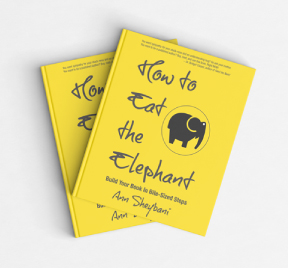Writing
Promise Me You Won’t Be Lazy
December 4, 2016
With the popularity of podcasts and YouTube channels, many tech-savvy entrepreneurs have created a series of interviews to promote their business.
Now, if you want a book to further establish yourself as the go to expert, a collection of your transcribed interviews may be just the way to go.
I’ll caution you here, though. If you think you can transcribe interviews and publish them without additional work, you’re dead wrong because the spoken word, no matter how interesting to listen to, reads like the musings of a schizophrenic on paper. How we communicate verbally is not how we communicate on the page. Lots of editing and shaping is required for clarity.
Transcripts, however, make for a lovely shitty first draft, and that’s precisely what you need at the onset of the project.
Usually when people think of interviews, they think of the interviewer posing questions and the interviewee answering them: Oprah asking Quincy Jones about his musical career, life with Peggy Lipton, and such.
On the page, their back-and-forth conversation comes across as smart, well thought out, polished. There’s no hemming and hawing, or weird tangents, or incomplete thoughts, proof, not that these people are polished speakers, which, let’s face it, they are, but that an editor has done an awful lot of work to make the resultant transcript readable.
While you can certainly interview subjects and transcribe the recording, use it in your book, I’d like you to consider the possibility of dressing it up a good bit to make it more compelling, because nobody wants to read 100 pages of straight transcript. Particularly if you’re a lazy git and can’t be bothered to clean the stuff up.
Let me give you an example of what I mean when I say dress the thing up.
Karen Bridson wrote the book The Secrets of Skinny Chicks. In it, she wrote a forward that basically explains the premise of the book. She was a fat girl who got skinny. She realized that, if you weren’t born naturally thin, you had to use some tricks to get your body weight down to a dream number. Her story being only so long, say fifteen pages, she decided to interview other women who had figured out their own method to do just that to flesh out the content.
So Bridson went out into the world and found these skinny women. She provided them with a form that asked a series of identical questions, which they each filled out. Once they returned these forms to her, Bridson sat in her chair, (one can only assume), and sketched out a little profile for each of them, giving her readers the relevant details. She then described her subjects’ typical daily menu, their exercise routine, and basic philosophy, all of which she pulled off of said form. Then Karen went in and pointed out each of the women’s secret weapons, placed that at the bottom of their respective sections.
Once she compiled these “interviews”, formatted them to make them look pretty, she had herself a book.
Super simple. One form. No need to reinvent the wheel.
Podcasters who regularly interview people, experts who’ve created a regular interview series on their websites may want to consider just this kind of book as a way of repurposing great content, and to offer it up in a readable form.



